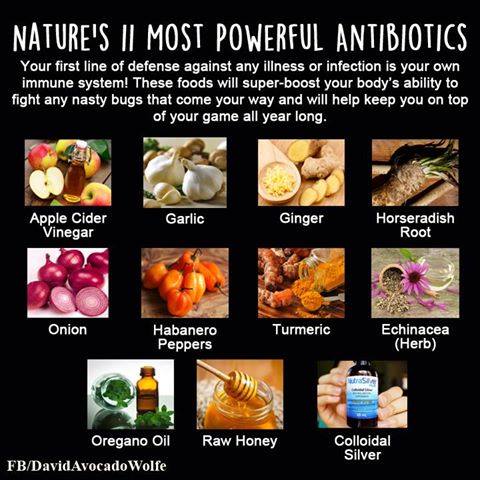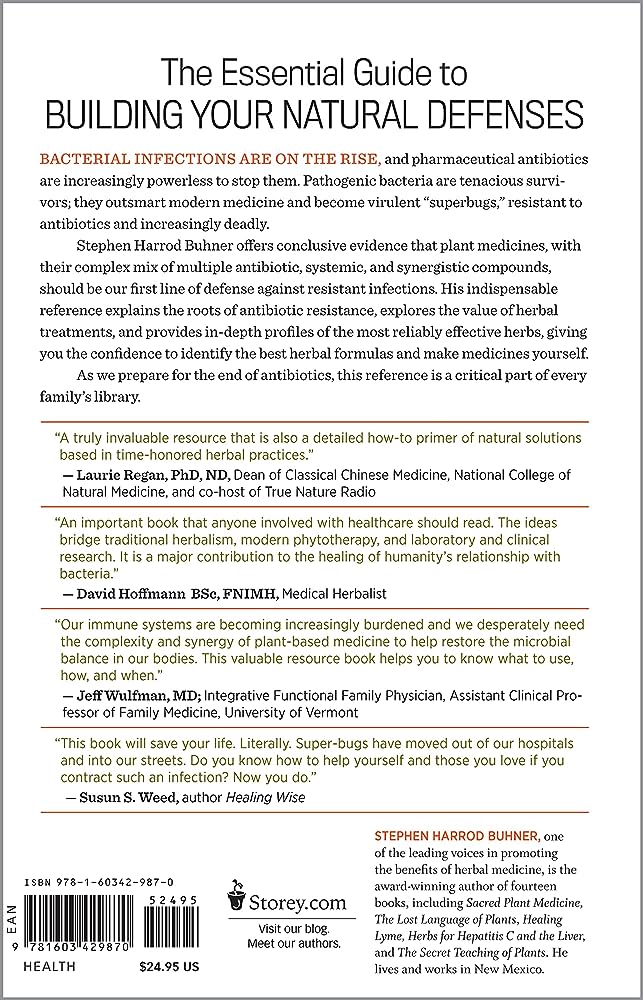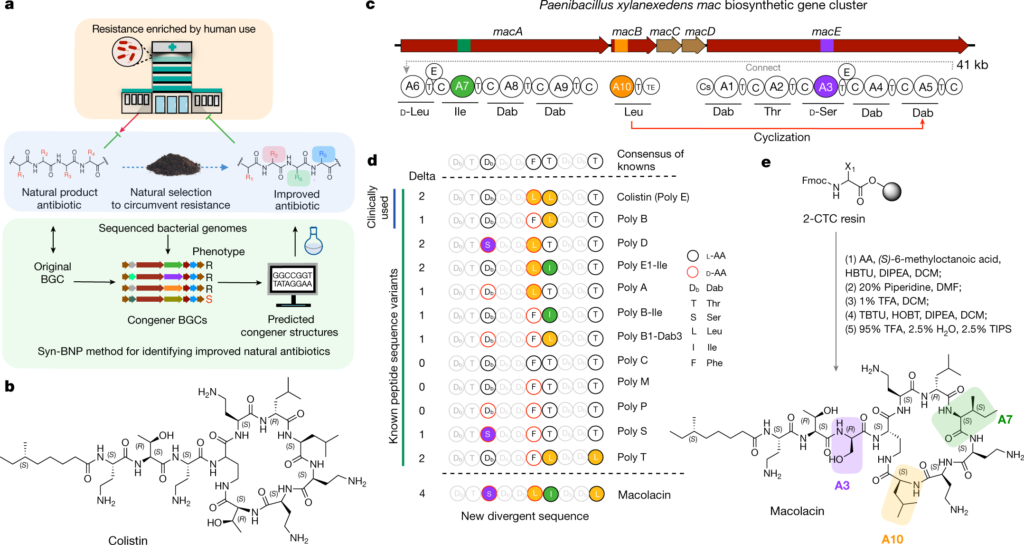Have you ever wondered if there are any natural alternatives to antibiotics for fighting infections? Well, you’re in luck! In this article, we’ll explore how nature has provided us with its own defense mechanism in the form of natural antibiotics. From garlic and honey to tea tree oil and oregano, we’ll discover the powerful properties of these natural remedies and how they can help boost your immune system and fight off infections.
When it comes to treating infections, antibiotics prescribed by doctors are often the go-to solution. However, relying solely on these medications can sometimes lead to antibiotic resistance, making it harder to combat certain diseases. That’s where natural antibiotics come into play. These natural remedies possess antibacterial, antiviral, and anti-inflammatory properties that can effectively combat infections without the risk of resistance. In this article, we’ll delve into the world of natural antibiotics and explore their benefits and uses in more detail, so you can discover a safer and more sustainable way to support your body’s defense against infections. Stay tuned!
Understanding Infections
Infections are a common occurrence in our daily lives, and they can range from minor nuisances to serious health threats. It is important to understand the signs and symptoms of infections, the different types, and how they spread in order to effectively protect yourself and others.
Signs and Symptoms of Infection
When your body is infected, it reacts in different ways to fight off the invading pathogens. Some common signs and symptoms of infection include:
- Fever: A rise in body temperature indicates that your immune system is actively fighting off an infection.
- Redness and swelling: Inflammation is a common response to infections and can be seen as redness and swelling in the affected area.
- Pain and discomfort: Infections can cause pain or discomfort, depending on the site of the infection.
- Fatigue: Your body’s immune response to infections can leave you feeling tired and drained.
- Discharge or secretions: In some infections, such as respiratory or urinary tract infections, you may experience abnormal discharge or secretions.
Recognizing these signs and symptoms is crucial in seeking appropriate medical attention and taking necessary precautions to prevent the spread of infection.
Types of Infections
Infections can be caused by various pathogens, including bacteria, viruses, fungi, and parasites. They can affect different parts of your body, leading to specific types of infections. Some common types of infections include:
- Respiratory infections: These affect the respiratory system, including the nose, throat, and lungs. Common examples include the common cold, influenza, and pneumonia.
- Urinary tract infections (UTIs): These occur when bacteria enter the urinary tract, leading to symptoms such as frequent urination, pain or burning during urination, and cloudy urine.
- Skin infections: These can range from minor skin irritations like acne and rashes to more serious conditions like cellulitis and abscesses.
- Gastrointestinal infections: These affect the digestive system and can cause symptoms such as diarrhea, vomiting, and abdominal pain. Examples include gastroenteritis and food poisoning.
- Sexually transmitted infections (STIs): These are infections transmitted through sexual contact and include diseases such as chlamydia, gonorrhea, and syphilis.
- Bloodstream infections: These occur when bacteria or other pathogens enter the bloodstream, leading to conditions like sepsis. They can be life-threatening if not treated promptly.
Understanding the type of infection you have is important in determining the appropriate treatment and preventive measures.
How Infections Spread
Infections can spread through various means, and understanding how they are transmitted is crucial in preventing their spread. Here are some common ways infections can spread:
- Direct contact: Infections can be transferred from person to person through direct contact, such as touching, kissing, or sexual contact.
- Indirect contact: Infections can also spread indirectly through contaminated objects or surfaces. For example, touching a doorknob or shared surface contaminated with the flu virus can lead to infection.
- Airborne transmission: Some infections can spread through respiratory droplets in the air. When an infected person coughs, sneezes, or talks, tiny droplets containing the pathogens can be inhaled by others.
- Vector-borne transmission: Certain infections are transmitted by vectors such as mosquitoes, ticks, or fleas. These vectors carry the pathogens and transmit them to humans through bites.
- Food and waterborne transmission: Contaminated food and water can harbor pathogens and lead to infections when consumed.
Practicing good hygiene, such as regular handwashing, avoiding close contact with infected individuals, and maintaining a clean environment, can greatly reduce the risk of infection spread.
The Problem with Synthetic Antibiotics
Over the years, synthetic antibiotics have played a crucial role in treating various infections. However, their widespread use has led to some concerning issues.
Rise of Antibiotic Resistance
One major problem associated with synthetic antibiotics is the rise of antibiotic resistance. When antibiotics are overused or used inappropriately, bacteria can develop resistance to their effects, rendering them ineffective. This means that certain infections become more difficult to treat, leading to longer recovery times and potentially life-threatening complications.
Side Effects of Synthetic Antibiotics
Synthetic antibiotics can also have undesirable side effects. These medications can disrupt the natural balance of bacteria in your body, leading to issues such as gastrointestinal problems, yeast infections, and allergic reactions. Additionally, prolonged use of synthetic antibiotics can weaken your immune system, making you more susceptible to recurring infections.
Introduction to Natural Antibiotics
Given the challenges posed by synthetic antibiotics, many people are now turning to natural antibiotics as an alternative. Natural antibiotics, often derived from plants and other natural substances, have been used for centuries in traditional medicine to treat various infections.
Definition of Natural Antibiotics
Natural antibiotics are substances found in nature that possess antimicrobial properties, meaning they can inhibit or kill microorganisms such as bacteria, viruses, or fungi. These natural compounds can be effective in fighting infections and promoting overall health without the risks associated with synthetic antibiotics.
Benefits of Natural Antibiotics
Using natural antibiotics offers several benefits. Firstly, they are often readily available and affordable, making them accessible to a wide range of people. Additionally, natural antibiotics typically have fewer side effects compared to their synthetic counterparts.
Furthermore, natural antibiotics tend to have a broader spectrum of antimicrobial activity, meaning they can target a wide range of pathogens. This makes them valuable in treating infections caused by various microorganisms.
Common Natural Antibiotics
Nature provides a wealth of natural antibiotics that can be used to combat infections. Here are some common examples:
Garlic
Garlic is not only a popular culinary ingredient but also a powerful natural antibiotic. It contains compounds such as allicin, which have antimicrobial properties. Studies have shown that garlic can be effective against various bacterial, viral, and fungal infections.
Honey
Honey has been used for centuries as a natural remedy for various ailments, including infections. It has antimicrobial properties due to its high sugar content, low pH, and the presence of hydrogen peroxide. Honey can be applied topically or consumed to help fight bacterial, viral, and fungal infections.
Ginger
Ginger is known for its anti-inflammatory properties, but it also possesses antimicrobial properties. It can help boost the immune system and fight off infections, especially respiratory infections. Ginger can be consumed as a spice, tea, or in other forms to reap its benefits.
Turmeric
Turmeric is a vibrant yellow spice commonly used in Indian cuisine. It contains an active compound called curcumin, which has powerful anti-inflammatory and antimicrobial properties. Turmeric can be added to dishes or consumed as a supplement to help reduce inflammation and fight infections.
Echinacea
Echinacea is a flowering plant that has long been used as a natural remedy for various infections. It is thought to enhance the immune system’s response, making it effective against respiratory infections and other common illnesses.
Antibacterial Properties of Garlic
Garlic stands out as a particularly potent natural antibiotic due to its active compounds. It contains a sulfur-containing compound called allicin, which gives garlic its distinct odor and flavor. Allicin has been shown to have strong antimicrobial properties, making garlic an effective remedy against bacterial infections.
Active Compounds in Garlic
In addition to allicin, garlic contains other sulfur compounds, such as diallyl sulfide and diallyl disulfide, which also exhibit antimicrobial activity. These compounds work by inhibiting the growth and reproduction of bacteria, preventing them from causing further harm.
Effectiveness Against Bacterial Infections
Garlic has been shown to be effective against various bacterial infections, including those caused by antibiotic-resistant strains. Studies have demonstrated its efficacy against common pathogens such as Escherichia coli (E. coli), Staphylococcus aureus (S. aureus), and Streptococcus pneumoniae (S. pneumoniae). Using garlic as a natural antibiotic can aid in the treatment of respiratory, skin, and gastrointestinal infections.
Healing Properties of Honey
Honey is not only a sweet treat but also a natural antibiotic with remarkable healing properties. Its antimicrobial effects come from multiple factors, including its high sugar content, low pH, and the presence of hydrogen peroxide.
Antibacterial Benefits of Honey
The high sugar content in honey creates a hypertonic environment that draws moisture out of bacterial cells, effectively inhibiting their growth. Furthermore, honey’s low pH level inhibits bacterial growth, making it difficult for pathogens to survive in its presence.
Certain types of honey, such as Manuka honey, possess additional antibacterial properties due to the presence of an enzyme called glucose oxidase. This enzyme produces hydrogen peroxide, which has powerful antimicrobial effects.
Different Types of Honey and Their Uses
Different types of honey vary in their antimicrobial properties and composition. Manuka honey, derived from the nectar of the Manuka tree in New Zealand, is known for its potent antibacterial activity. It is commonly used to treat wounds, burns, and ulcers.
Other types of honey, such as raw honey and buckwheat honey, also exhibit antimicrobial effects and can be used in various home remedies. However, caution should be exercised when using honey in infants due to the risk of botulism.
Ginger: A Natural Immune Booster
Ginger is not only a flavorful spice but also a natural immune booster with an array of health benefits. Its strong anti-inflammatory properties aid in reducing inflammation in the body, making it an effective remedy against infections.
Anti-inflammatory Properties of Ginger
Inflammation is a natural response triggered by the immune system to fight off infections. However, excessive or chronic inflammation can be detrimental to your health. Ginger has been shown to inhibit the production of pro-inflammatory cytokines, thereby reducing inflammation and associated symptoms.
Strengthening the Immune System
A healthy immune system is crucial in defending against infections. Ginger contains antioxidant compounds that help strengthen the immune system by neutralizing harmful free radicals and enhancing the activity of immune cells. Regular consumption of ginger can help improve overall immune function and reduce the risk of infections.
Turmeric: A Powerful Anti-Inflammatory Agent
Turmeric has gained popularity for its vibrant color and distinctive flavor, but it also boasts impressive health benefits. Curcumin, the active compound in turmeric, is responsible for its powerful anti-inflammatory and antimicrobial properties.
Curcumin in Turmeric and Its Health Benefits
Curcumin is a potent antioxidant that helps reduce inflammation by inhibiting various inflammatory pathways in the body. Its anti-inflammatory effects have been studied extensively and show promise in treating inflammatory conditions and reducing the risk of chronic diseases.
Reducing Inflammation and Fighting Infections
In addition to its anti-inflammatory properties, curcumin also exhibits antimicrobial effects. It has been shown to inhibit the growth of bacteria and fungi, making it effective against a range of infections. Consuming turmeric regularly, either through foods or supplements, can help in reducing inflammation and fighting off infections.
Exploring Echinacea’s Antimicrobial Effects
Echinacea is a flowering plant commonly used in traditional medicine to boost the immune system and fight off infections. It has long been touted for its antimicrobial effects against bacterial, viral, and fungal pathogens.
Immune-Boosting Capabilities of Echinacea
Echinacea contains various active compounds that are believed to enhance the immune system’s response to infections. These compounds stimulate the activity of immune cells, such as macrophages and natural killer cells, boosting the body’s ability to fight off pathogens.
Effectiveness Against Various Infections
Research suggests that Echinacea may be effective in preventing and shortening the duration of respiratory infections, such as the common cold. It has also shown promise in treating other infections, including urinary tract infections and skin infections. However, more studies are needed to fully understand its mechanisms and potential applications.
Conclusion
In the face of rising antibiotic resistance and the potential side effects of synthetic antibiotics, natural alternatives offer a promising solution. Natural antibiotics derived from plants and other natural substances can effectively combat infections with fewer risks and side effects. Garlic, honey, ginger, turmeric, and Echinacea are just a few examples of nature’s defense against infection.
By embracing natural antibiotics, you can not only protect your own health but also contribute to the global efforts in combating antibiotic resistance. Continued research and innovation in this field are crucial in further understanding the effectiveness and potential applications of natural antibiotics. So, the next time you’re faced with an infection, consider turning to nature’s defense for a safer and more sustainable solution.





